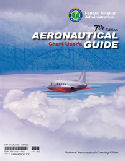Additional information provided by Procockpit.
5-5-2. Air Traffic Clearance
a. Pilot.
1. Acknowledges receipt and understanding of an ATC clearance.
2. Reads back any hold short of runway instructions issued by ATC.
3. Requests clarification or amendment, as appropriate, any time a clearance is not fully understood or considered
unacceptable from a safety standpoint.
4. Promptly complies with an air traffic clearance upon receipt except as necessary to cope with an emergency.
Advises ATC as soon as possible and obtains an amended clearance, if deviation is necessary.
NOTE-
A clearance to land means that appropriate separation on the landing runway will be ensured. A landing clearance
does not relieve the pilot from compliance with any previously issued altitude crossing restriction.
b. Controller.
1. Issues appropriate clearances for the operation to be conducted, or being conducted, in accordance with
established criteria.
2. Assigns altitudes in IFR clearances that are at or above the minimum IFR altitudes in controlled airspace.
3. Ensures acknowledgement by the pilot for issued information, clearances, or instructions.
4. Ensures that readbacks by the pilot of altitude, heading, or other items are correct. If incorrect, distorted,
or incomplete, makes corrections as appropriate.
| 











